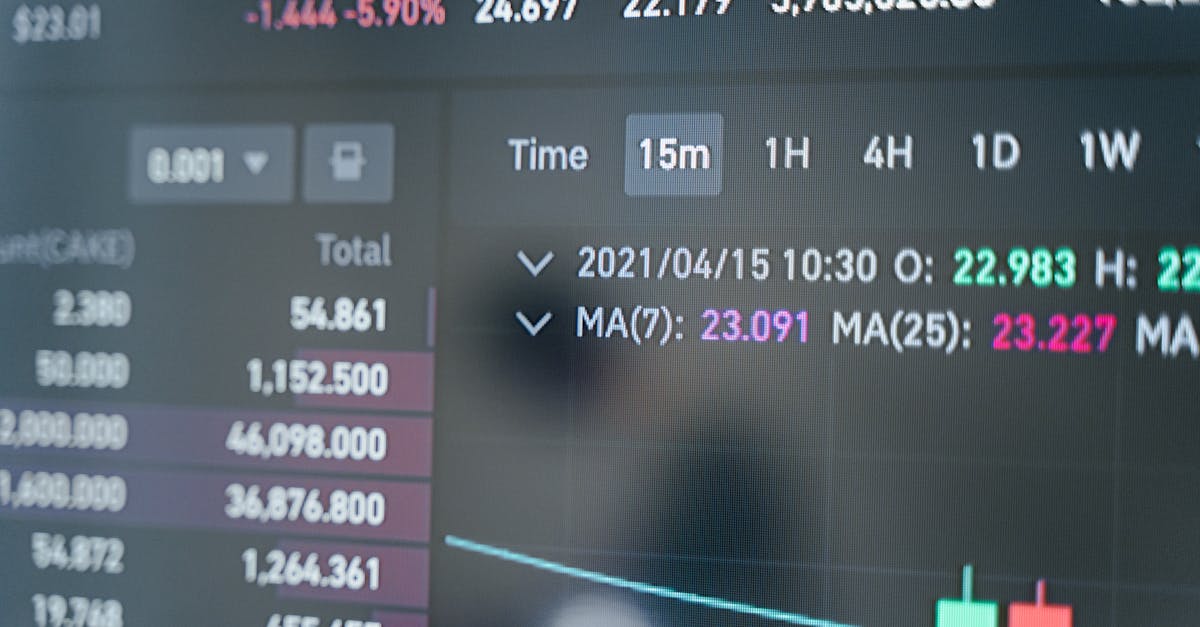Finance Trends Essentials 2026
Introduction
Finance is an ever-evolving field shaped by technological advancements and global events. As we move towards 2026, several critical trends are poised to redefine the way individuals and corporations manage their finances. From digital currencies to sustainable investments, these shifts offer both opportunities and challenges. However, understanding these trends is essential for anyone eager to navigate the financial landscape effectively. This article delves into the key finance trends of 2026, providing insights and practical implications. Join us as we explore the factors that will shape the future of finance and help you stay ahead in this dynamic environment.
Advertisement
The Influential Rise of Digital Currencies
Cryptocurrencies continue to gain traction, reshaping traditional finance. Countries explore central bank digital currencies (CBDCs), aiming to modernize payment systems and mitigate reliance on physical currency. The potential for reduced transaction costs and enhanced security makes digital currencies attractive to consumers and businesses. With increased adoption, regulatory frameworks are becoming a focal point, balancing innovation with protection. The integration of blockchain technology further secures transactions, providing a transparent, decentralized system that enhances trust. As we approach 2026, digital currencies are expected to impact global trade, cross-border payments, and investment strategies profoundly.
Advertisement
Transformative Effects of Artificial Intelligence
Artificial Intelligence (AI) is becoming indispensable in the finance sector. AI algorithms are revolutionizing everything from risk assessment to customer service. Financial institutions leverage AI to enhance fraud detection, optimize trading strategies, and personalize client offerings. As machine learning capabilities grow, predictive analytics helps with financial forecasting and decision making. Automation reduces operational costs, streamlining processes like loan approval and compliance checks. By 2026, AI is anticipated to deliver even more sophisticated tools, aiding in faster, more informed financial decisions while reshaping traditional roles in finance.
Advertisement
The Shift Towards Sustainable Finance
Sustainability has emerged as a major driver in finance, prompting the rise of environmental, social, and governance (ESG) investments. Investors increasingly prioritize companies with responsible practices, emphasizing long-term value over short-term gains. Governments and regulatory bodies are incorporating ESG criteria into financial standards, incentivizing sustainable practices. As consumer demand shifts towards ethical products, businesses adapt their strategies to incorporate social responsibility. Carbon trading, green bonds, and eco-friendly startups are viable opportunities gaining attention. By 2026, sustainable finance is expected to become mainstream, reflecting broader societal values and affecting investment portfolios.
Advertisement
Fintech Innovations Reshaping Banking
Financial technology, or fintech, continues to disrupt traditional banking. Fintech companies offer innovative solutions like peer-to-peer lending, digital wallets, and robo-advisors. These services provide convenience, lower fees, and increased accessibility for clients. Open banking initiatives allow third-party developers to create apps based on financial data, encouraging competition and innovation. As consumers become empowered to manage finances digitally, traditional banks are compelled to adapt or risk obsolescence. By 2026, fintech is predicted to further transform financial services, encouraging collaboration between traditional institutions and fintech innovators.
Advertisement
The Evolution of Cybersecurity in Finance
As financial transactions shift online, cybersecurity becomes increasingly critical. Cyber threats evolve with technological progress, necessitating robust security measures. Financial institutions are enhancing cybersecurity protocols to protect sensitive data and maintain consumer trust. Innovations such as biometric authentication and blockchain technology provide added layers of security. Regulatory bodies are introducing stricter compliance requirements to thwart breaches. As the threat landscape expands, professionals skilled in cybersecurity are in demand. By 2026, safeguarding financial ecosystems from cyber threats remains a top priority, underscoring the importance of keeping pace with evolving risks.
Advertisement
Emergence of Decentralized Finance
Decentralized finance, or DeFi, challenges traditional financial systems by utilizing decentralized technologies on blockchain platforms. Offering peer-to-peer financial services without intermediaries, DeFi promises enhanced transparency, reduced fees, and improved accessibility. With smart contracts automating and governing transactions, DeFi offers solutions for lending, borrowing, and asset management. However, the nascent industry faces hurdles, including security vulnerabilities and regulatory scrutiny. As it matures, DeFi could revolutionize global finance, democratizing access to services traditionally dominated by centralized authorities. By 2026, DeFi's influence is expected to expand, fostering innovation and inclusion.
Advertisement
The Impact of Regulatory Changes
Regulation remains a cornerstone of financial stability, adapting to fit emerging trends and technologies. Governments worldwide are grappling with balancing innovation and consumer protection, leading to the formulation of new policies. Cryptocurrency regulation, data privacy laws, and anti-money laundering measures are areas of focus. These regulatory frameworks aim to foster innovation while mitigating risks associated with novel finance technologies. Industry stakeholders must stay informed about regulatory trends to mitigate compliance risks. Looking forward to 2026, the regulatory landscape will continue to shape the financial industry, with ongoing reforms impacting business practices and operations.
Advertisement
The Importance of Financial Literacy
Financial literacy is vital for understanding and navigating complex financial landscapes. As new trends emerge, individuals are empowered by sound financial knowledge. Organizations and governments increasingly offer educational programs to enhance financial literacy. Understanding concepts like investment strategies, risk management, and digital finance is essential for decision-making. Policymakers recognize financial literacy as a tool for economic stability and growth. By 2026, initiatives aimed at increasing global financial literacy are expected to equip more people with the skills needed to thrive in an evolving financial world.
Advertisement
Conclusion
Finance is on the brink of transformation, driven by technology, sustainability, and regulatory advancements. As we look towards 2026, staying abreast of these trends is imperative for individuals and businesses alike. Digital currencies, AI, and DeFi promise to reshape traditional systems, paving the way for more efficient, inclusive financial services. At the same time, cybersecurity and regulation must keep pace to protect stakeholders. By investing in financial literacy and recognizing the value of sustainable finance, we can harness these trends' potential, ultimately guiding a prosperous and secure financial future.
Advertisement








